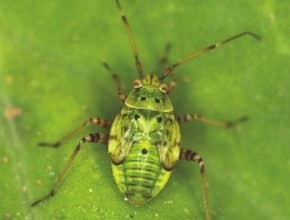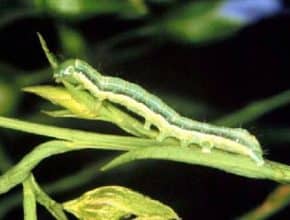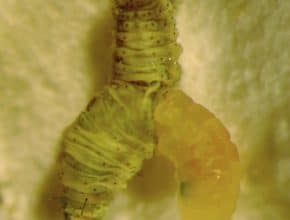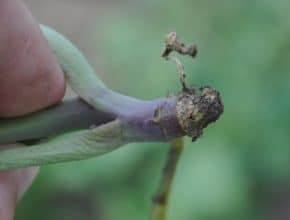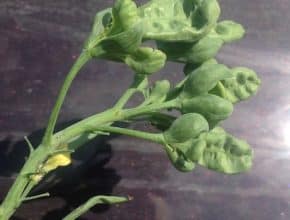Bertha armyworm larvae have started to feed in some locations, and the second generation of lygus has arrived in the southern Prairie. Watch pods and upper foliage for signs of feeding, and scout all fields. While scouting, also look for signs of blackleg, clubroot and foot rot (shown above). Late season foot rot has shown up in some fields, with…
July 25, 2012 - Issue 22
-
-
Second generation lygus have arrived. Young nymphs will reach late instar and adult stages in 5 to 14 days. When scouting to see if lygus numbers are near thresholds, include later instars — the ones with black dots on their back — as well as adults in the count. Bertha armyworm larvae are starting to feed in some locations…
-
-
We don’t have scientific evidence to combine thresholds, but where an “additive” effect of multiple species can make sense is when more than one species are feeding on key yield-producing areas — flowers, buds or pods — at the same time…
-
Lygus, bertha armyworm and diamondback moth have a number of natural enemies that will keep populations in check. These beneficial insects may not control an immediate insect threat — growers will still have to spray if economic thresholds are reached — but beneficials can keep a lid on populations. The key to preserving beneficial insects is to follow thresholds and…
-
-
Fields all across the Prairies are reporting aster yellows. The phytoplasma infection causes misshapen pods and flower buds. Most fields don’t go above 1% infected plants, however, some fields are reported this year with rates at 5% to 8% of plants infected. A 10% infection rate results in 3% to 7% misshapen seeds or no seeds at all…


